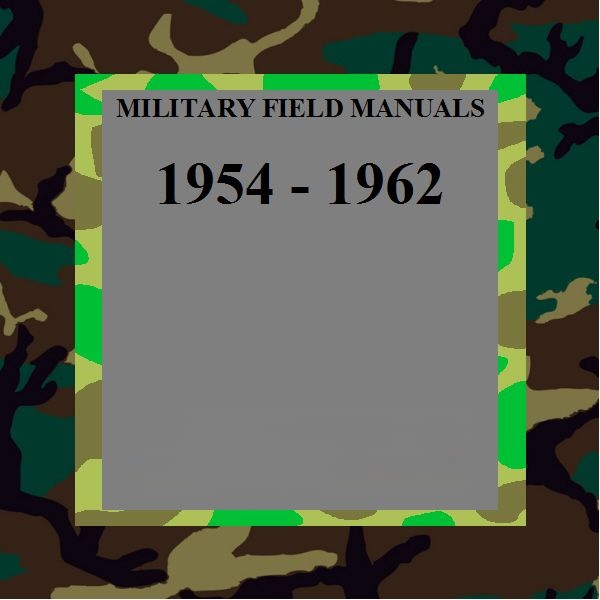
Description
Cold War Doctrine: US Military Manuals 1954-1962
- 1954-1962: Publication of Extensive Military Field Manuals: Over 25,585 pages across 143 manuals are published by the U.S. military. These manuals cover a vast array of topics, indicating a comprehensive effort to standardize and disseminate military doctrine across all branches and functions.
- Emphasis on Nuclear Issues: A significant new focus emerges on “nuclear issues not seen in manuals from previous time periods.” This suggests the integration of nuclear warfare considerations into military planning, operations, and training.
- Small Arms Operation and Maintenance: Manuals like TM 9-1005-206-12 detail the operation and maintenance of various .22 caliber rifles (Remington M513T, Stevens M416-2T, Winchester M75T), indicating a continued need for basic small arms proficiency.
- Infantry and Airborne Division Tactics: Manuals such as FM 7-10 and FM 7-40 highlight the tactical employment, preparation for combat, and leadership guidance for rifle companies and battle groups within both infantry and airborne divisions.
- Field Artillery Employment and Techniques: FM 6-20 focuses on the tactical employment, organization, command, and control of field artillery, including target intelligence, fire planning, and coordination of fire support. Special operations (airborne, amphibious) are also covered.
- Tank Gunnery and Armored Operations: FM 17-12 provides detailed principles, methods, techniques, and training exercises for tank gunnery, covering armament, controls, ammunition, ballistics, fire control, and range procedures. Other manuals like FM 17-1 and FM 17-15 indicate a focus on armored unit operations from small units to battalions.
- Field Fortifications and Obstacles: FM 5-15 emphasizes the use of fortifications and obstacles for protection of personnel and installations, highlighting defensive strategies.
- Medical Services and Casualty Management: Manuals like FM 8-5 and FM 8-35 detail the organization, functions, and transportation methods for medical service units and the sick/wounded in theaters of operations, showing a concern for troop welfare and medical logistics. FM 21-11 provides basic first aid for soldiers, including specific injuries and chemical exposure.
- Ordnance and Logistics: FM 9-65 outlines the organization and operations of Armored Ordnance Battalions, focusing on mission accomplishment, training, and logistics. Other manuals like FM 9-2 and FM 9-5 cover broader ordnance logistical data and service in the field.
- Graves Registration and Deceased Personnel Handling: FM 10-63 provides detailed technical assistance for handling deceased personnel during military operations, including search, recovery, identification, burial, and record-keeping, indicating a formal process for managing casualties.
- Military Police Duties and Responsibilities: FM 19-5 defines the role of the Military Police (MP) soldier, covering history, authority, duties (patrols, crime prevention, apprehension, traffic control), investigations, and handling of enemy personnel, displaced persons, and refugees. FM 19-15 and FM 19-60 further detail MP involvement in civil disturbances and confinement of military prisoners.
- Comprehensive Training and Administration: Numerous other manuals cover a wide range of military activities including:
- Army Aviation (FM 1-100, FM 1-5, FM 1-10)
- Camouflage (FM 5-20, FM 5-21, FM 5-22)
- Engineer Battalions (FM 5-132, FM 5-134)
- Signal Communications (FM 11-8, FM 11-10, FM 11-11, FM 11-15, FM 11-16, FM 11-21, FM 11-40, FM 11-41)
- Administration and Staff Work (FM 12-11, FM 101-1)
- Moral and Character Guidance (FM 16-5, FM 16-100)
- Armored Cavalry (FM 17-35, FM 17-36)
- Specialized Units (Military Dog Training, Vehicle Recovery)
- Basic Soldier Skills (Military Training, Instruction Techniques, Sanitation, Foot Marches, Physical Training, Map Reading, Drill and Ceremonies, Marksmanship)
- Leadership and Law (Military Leadership, The Law of Land Warfare)
- Intelligence (Terrain Intelligence, Aggressor Forces)
- Logistics and Transportation (Logistics Supply Management, Transportation Operations, Rail Transportation)
- Civil Affairs-Military Government (Joint Manual, Operations)
- Air Defense (Light Antiaircraft Artillery)
- Command Structures (Logistical Command, Division Logistics, Maneuver Control)
- Cold Weather Operations (Operation and Maintenance of Ordnance Materiel in Extreme Cold Weather)
- Ordnance Machine Tools and Materials (Fundamentals of Ordnance Corps Machine Tools, Materials Used for Cleaning, Preserving, etc.)
This period reflects the U.S. military’s comprehensive efforts to modernize and document its operational, logistical, and administrative procedures in the early Cold War era, with a notable adaptation to the realities of nuclear weapons.
Cast of Characters
The provided source is a list of military field and technical manuals. As such, it does not mention specific individuals or historical figures by name. The “characters” in this context are the roles and units that these manuals are designed for or address.
Here is a “Cast of Characters” based on the principal people/roles mentioned in the purpose or target audience of the manuals:
- Soldier: The fundamental individual in the military, the primary recipient of information for first aid, physical training, marksmanship, and general military conduct.
- Rifle Company Personnel (Infantry and Airborne Divisions): Includes the basic combat soldiers, non-commissioned officers, and officers who make up these fundamental fighting units.
- Battle Group Commanders & Staffs (Infantry and Airborne Divisions): Leaders responsible for preparing and employing battle groups in combat, as well as their supporting staff officers.
- Subordinate Unit Leaders (Battle Groups): Individuals responsible for leading smaller elements within battle groups.
- Commanders of Supporting Units: Leaders of units that provide support functions to infantry and airborne divisions.
- Staff Officers of Higher Headquarters: Personnel involved in making recommendations for battle group employment and other strategic/operational planning.
- Field Artillery Officers: Commissioned officers specializing in artillery operations.
- Commanders & Staffs of All Combat Arms: Leaders and planning personnel across various combat branches who interact with field artillery.
- Personnel Assigned to the Armored Ordnance Battalion: Includes battalion and company commanders, and key personnel responsible for operating this logistical and maintenance unit.
- Personnel of the Army, Navy, Marine Corps, and Air Force engaged in Graves Registration Activities: Individuals from various services responsible for handling deceased personnel during military operations.
- All Commanders (including Combat Commanders): General term for any officer in command, responsible for oversight of activities including graves registration.
- Personnel & Units Concerned with Search, Recovery, Evacuation, Identification, and Burial of Deceased Personnel: Specific roles within graves registration.
- Military Policeman (MP) Soldier: The individual performing military police duties.
- Officers (Commissioned and Noncommissioned) [MP]: Leaders within the Military Police Corps responsible for training, employment, and supervision of MPs.
- Trained Medical Personnel: Refers to doctors, medics, and other healthcare providers who arrive after initial first aid is administered.
Military Field & Technical Manuals 1954-1962
25,585 pages of military field manuals. The 143 manuals date from 1954 to 1962. Many of these manuals deal with nuclear issues not seen in manuals from previous time periods.
Highlights include:
TM 9-1005-206-12 Operation and Organizational Maintenance Caliber .22 Rifle M13, Remington Rifle M513T, Stevens Rifle M416-2T, and Winchester Rifle M75T
This field manual contains information on the operation and organizational maintenance of the cal. .22 Remington rifle M513T, the cal. .22 Stevens rifle M416-2T, and the cal. .22 Winchester rifle M75T. Topics include: Description and data. Operating instructions. Operation under usual conditions for Remington rifle M513T. Operation under usual conditions for Stevens rifle M416-2T. Operation under usual conditions for Winchester rifle M75T. Operation under unusual conditions. Parts, special tools, and equipment. Lubrication. Preventive-maintenance services. Troubleshooting. Ammunition. Shipment and Storage. Destruction of materiel to prevent enemy use.
FM 7-10 Rifle Company Infantry and Airborne Division Battle Group
This field manual is a guide to the tactical employment of the rifle company, infantry division battle group, and the rifle company, airborne division battle group.
FM 6-20 Field Artillery Tactics and Techniques
This field manual is a guide for field artillery officers and commanders and staffs of all combat arms. It is concerned with the tactical employment of field artillery. It covers organization, command, and tactical control of field artillery. It includes a discussion of the techniques involved in target intelligence and analysis, field artillery fire planning, and the direction of field artillery fires. It includes a general discussion of the principles, organization and techniques of coordination of fire support with particular emphasis given to field artillery aspects. The employment of field artillery in airborne, amphibious, and other special operations is covered.
FM 17-12 Tank Gunnery
This field manual presents tank gunnery principles, methods, and techniques, and training exercises and proficiency tests applicable to all types and models of standard tanks. This field manual is divided into five parts. Part one outlines the purpose and scope of this field manual. Part two presents general characteristics of tank armaments, turrets, armament controls, ammunition, and ballistics; part three, the fundamentals of tank gunnery and fire control equipment; part four, the conduct of fire, both direct and indirect; and part five, tank gunnery training, testing, and qualification, familiarization, and practice firing, and procedures for establishing and conducting tank firing ranges.
FM 5-15 Field Fortifications
This field manual provides information on the use of field fortifications and obstacles in proper combinations with mobility and dispersion for the protection of individuals, units, and administrative support installations in the field.
FM 7-40 Infantry and Airborne Division Battle Groups
This field manual is a guide for battle group commanders, their staffs, and subordinate unit leaders in preparing their commands for and employing them in combat. It is also a guide for commanders of supporting units and for staff officers of higher headquarters whose duties may include making recommendations for battle group employment.
FM 8-5 Medical Service Units Theater of Operations
The purpose of this field manual is to provide information on the normal organization, training, functions, administration, and internal activities of Army Medical Service units/elements normally utilized in a theater of operations.
FM 8-35 Transportation of the Sick and Wounded
This field manual describes the principal methods and means of transporting the sick and wounded. It includes a description of the common methods of transporting casualties on land, sea, and in the air.
FM 9-65 Armored Ordnance Battalion
This field manual is a guide for personnel assigned to the Armored Ordnance Battalion. It is designed, primarily, to provide the battalion and company commanders and the key personnel of the battalion with the basic information needed to operate the unit in a manner that will permit efficient mission accomplishment. This field manual contains specific material on the organization, mission, employment, operational methods, training, administration, logistics, communication, and special problems of the armored ordnance battalion.
FM 10-63 Handling of Deceased Personnel in Theaters of Operations
This field manual provides technical assistance to personnel of the Army, Navy, Marine Corps, and Air Force engaged in graves registration activities during major military operations. It is designed for use by all commanders (including combat commanders) and by personnel and units concerned with, or responsible for, search, recovery, and evacuation of deceased personnel, location and layout of temporary cemeteries, identification and burial of the dead, and preparation of reports and records in connection with these activities.
FM 19-5 The Military Policeman
This field manual addresses the military police, MP, soldier. Its purpose is to furnish basic information and instruction relative to the performance of military police, MP, duties. It provides a guide to officers, both commissioned and noncommissioned, in respect to training, employment, and supervision as a military policeman (MP). This field manual sets forth the role and a brief history of the Military Police Corps. It includes information as authority, responsibilities, duties, and equipment. Other agencies, military and civilian, engaged in activities related to those MPs perform within the Army are indicated. Special methods and techniques that MPs use in performing their duties are discussed.
Topics include: History. Standards and appearance. Uniform and equipment. Other law enforcement agencies. Jurisdiction. Authority. Military police patrols and fixed posts. Crime prevention. Apprehension, restraint, and detention. Military police notebook and reports. Assisting military police criminal investigators. Investigating incidents. Witness in court. Military police traffic control. Handling enemy personnel, displaced persons, and refugees. Physical security and protection of persons. Disturbances and disasters.
FM 21-11 First Aid for Soldiers
The purpose of this field manual is to provide the basic fundamentals of first aid care and treatment which a solider can apply to himself or to another soldier before the arrival of trained medical personnel. It includes instructions in first aid measures to take for special injuries such as chest and stomach; common emergencies, such as snake bite and drowning; injuries resulting from contact with chemicals, such as war gases and propellant fuels and oxidizers; and how to transport the sick and wounded so as not to aggravate their condition or endanger their life.
Other manuals on the disc include:
FM 1-100 Army Aviation
FM 23-8 U.S. Rifle 7.62-mm M14
FM 6-20-1 Field Artillery Tactics
FM 6-40 Field Artillery Gunnery
FM 6-77 105-mm Howitzer M52 Self-Propelled
FM 6-140 The Field Artillery Battery
FM 17-1 Armor Operations Small Units
FM 55-6-1 Army Transport Aviation Combat Operations
FM 101-1 Staff Officers’ Field Manual The G1 Manual
FM 1-5 Army Aviation Organizations and Employment
FM 1-10 Army Aviation Organizational Aircraft Maintenance Supply
FM 5-20 Camouflage Basic Principles and Field Camouflage
FM 5-21 Camouflage of Fixed Installations
FM 5-22 Camouflage Materials
FM 5-30 Engineer Intelligence
FM 5-36 Route Reconnaissance and Classification
FM 5-132 Infantry Division Engineer Battalion
FM 5-134 Armored Division Engineer Battalion
FM 6-10 Field Artillery Communications
FM 6-21 Division Artillery
FM 6-21 Division Artillery, Infantry Division
FM 7-19 Combat Support Company Infantry Division Battle Group
FM 7-21 Headquarters and Headquarters Company Infantry Division
FM 7-24 Communication in Infantry and Airborne Divisions
FM 7-30 Service and Medical Companies Infantry Regiment
FM 7-100 Infantry Division
FM 8-10 Medical Service Theater of Operations
FM 8-50 Bandaging and Splinting
FM 8-55 Army Medical Service Planning Guide
FM 9-2 Ordnance Corps Logistical Data
FM 9-5 Ordnance Service in the Field
FM 9-197 Ordnance General Automotive Support Company
FM 11-8 Field Radio Relay Techniques
FM 11-10 The Signal Battalion Infantry Division
FM 11-11 The Signal Battalion Armored Division
FM 11-15 Signal Cable Construction Battalion
FM 11-16 Signal Orders, Records, and Reports
FM 11-21 Tactical Signal Communication Systems Army, Corps and Division
FM 11-40 Signal Corps Pictorial Operations
FM 11-41 Film and Equipment Exchange Operations
FM 12-11 Administration Company Airborne, Armored, Infantry and Mechanized Divisions
FM 12-50 The Marching Band
FM 16-5 The Chaplain
FM 16-100 Character Guidance Manual
FM 17-12 Tank Gunnery
FM 17-15 Tank Units Platoon, Company and Battalion
FM 17-20 Armored Infantry Units Platoon, Company and Battalion
FM 17-30 The Armored Division Brigade
FM 17-33 Tank Units Platoon, Company and Battalion
FM 17-35 Armored Cavalry Platoon, Troop and Squadron
FM 17-35 Armored Cavalry Units Armored and Infantry Divisions
FM 17-36 Armored Cavalry Platoon and Troop Air Cavalry Troop and Divisional Armored Cavalry Squadron
FM 19-15 Civil Disturbances and Disasters
FM 19-60 Confinement of Military Prisoners
FM 20-20 Military Dog Training and Employment
FM 20-22 Vehicle Recovery Operations
FM 21-5 Military Training
FM 21-6 Techniques of Military Instruction
FM 21-10 Military Sanitation
FM 21-18 Foot Marches
FM 21-20 Physical Training
FM 21-26 Map Reading
FM 22-5 Drill and Ceremonies
FM 22-100 Military Leadership
FM 23-71 Rifle Marksmanship Course Trainfire I
FM 24-20 Field Wire and Field Cable Techniques
FM 25-10 Motor Transportation Operations
FM 26-5 Interior Guard
FM 27-10 The Law of Land Warfare
FM 30-10 Terrain Intelligence
FM 30-101 Aggressor The Maneuver Enemy
FM 30-101A Aggressor the Maneuver Enemy Esperanto Language
FM 30-102 Handbook on Aggressor Military Forces
FM 30-102 Handbook on Aggressor Military Forces
FM 38-1 Logistics Supply Management
FM 41-5 Joint Manual of Civil Affairs-Military Government
FM 41-10 Civil Affairs Military Government Operations
FM 44-2 Light Antiaircraft Artillery (Automatic Weapons)
FM 54-1 The Logistical Command
FM 54-2 Division Logistics and the Support Command
FM 55-4 Transportation Movements in Theaters of Operations
FM 55-6 Transportation Services in Theaters of Operations
FM 55-21 Rail Transportation Higher Units
FM 55-23 Transportation Railway Shop Battalion
FM 57-35 Army Transport Aviation Combat Operations
FM 105-5 Maneuver Control
TM 9-207 Operation and Maintenance of Ordnance Materiel in Extreme Cold Weather 0 ° TO -65° F
TM 9-242 Fundamentals of Ordnance Corps Machine Tools
TM 9-247 Materials Used for Cleaning, Preserving, Abrading, and Cementing Ordnance Materiel and Related Materials Including Chemicals
TM 9-1000-202-35 Operating Procedures Evaluation of Cannon Tubes
TM 9-1005-206-12 Operation and Organizational Maintenance Caliber .22 Rifle M13, Remington Rifle M513T, Stevens Rifle M416-2T, and Winchester Rifle M75T
The files contain a text transcript of all recognizable text embedded into the graphic image of each page of each document, creating a searchable finding aid. Text searches can be done across all files in the collection
Related products
-

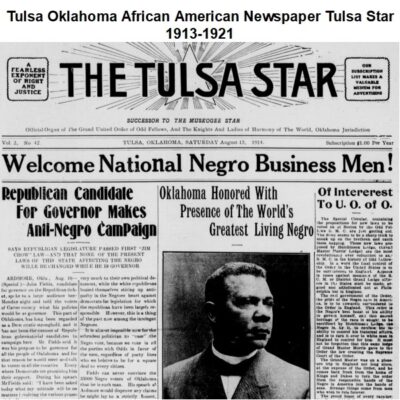
Tulsa Oklahoma African American Newspaper Tulsa Star 1913-1921
$9.90 Add to Cart -
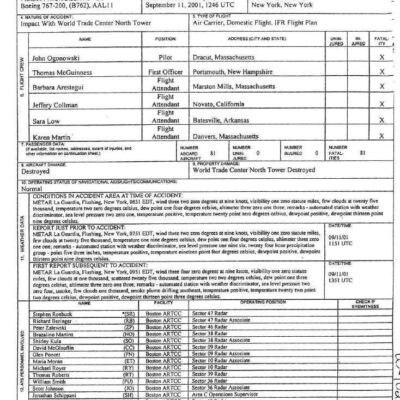
9/11 Terrorist Attacks: FAA & NTSB Documents
$19.50 Add to Cart -
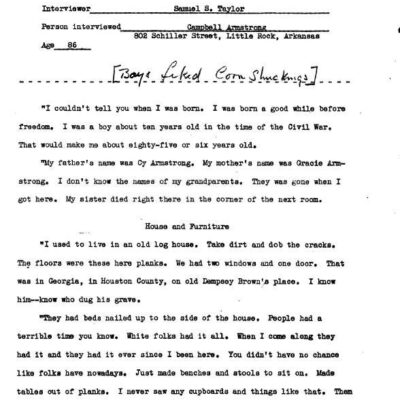

African American Slave Testimonies and Photographs
$19.50 Add to Cart -
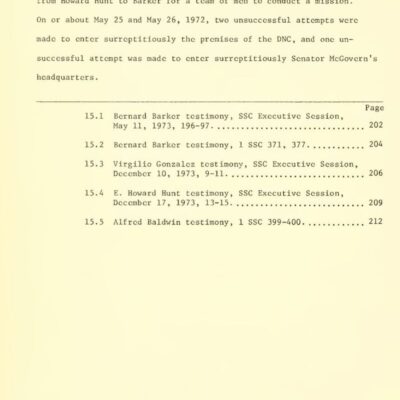
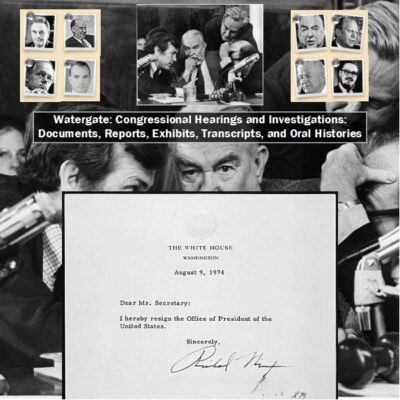
Watergate: Congressional hearings, reports, exhibits, and transcripts
$19.50 Add to Cart